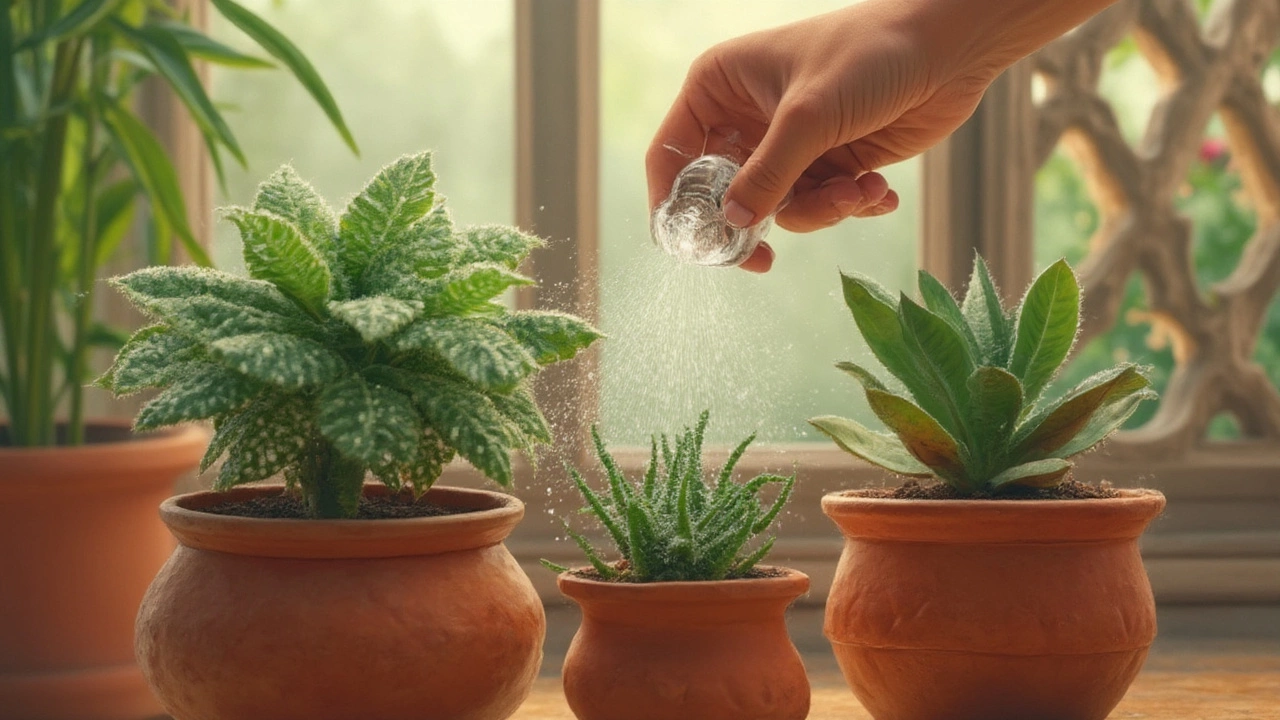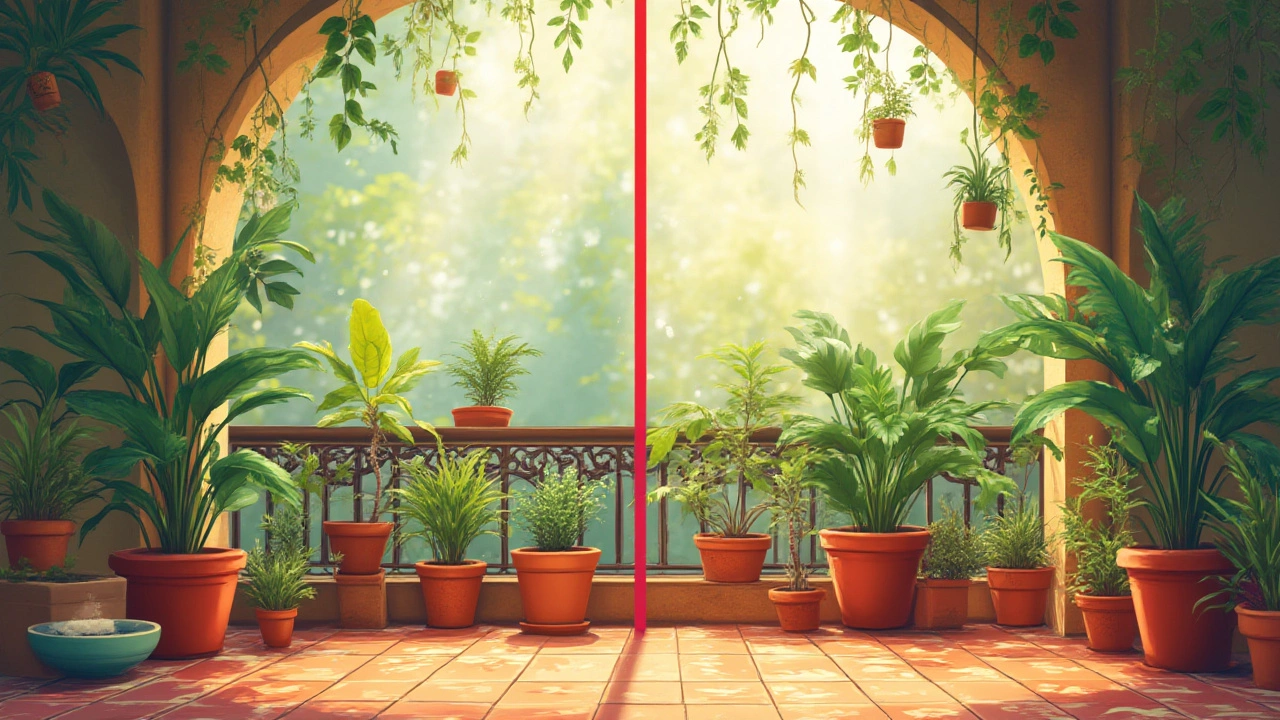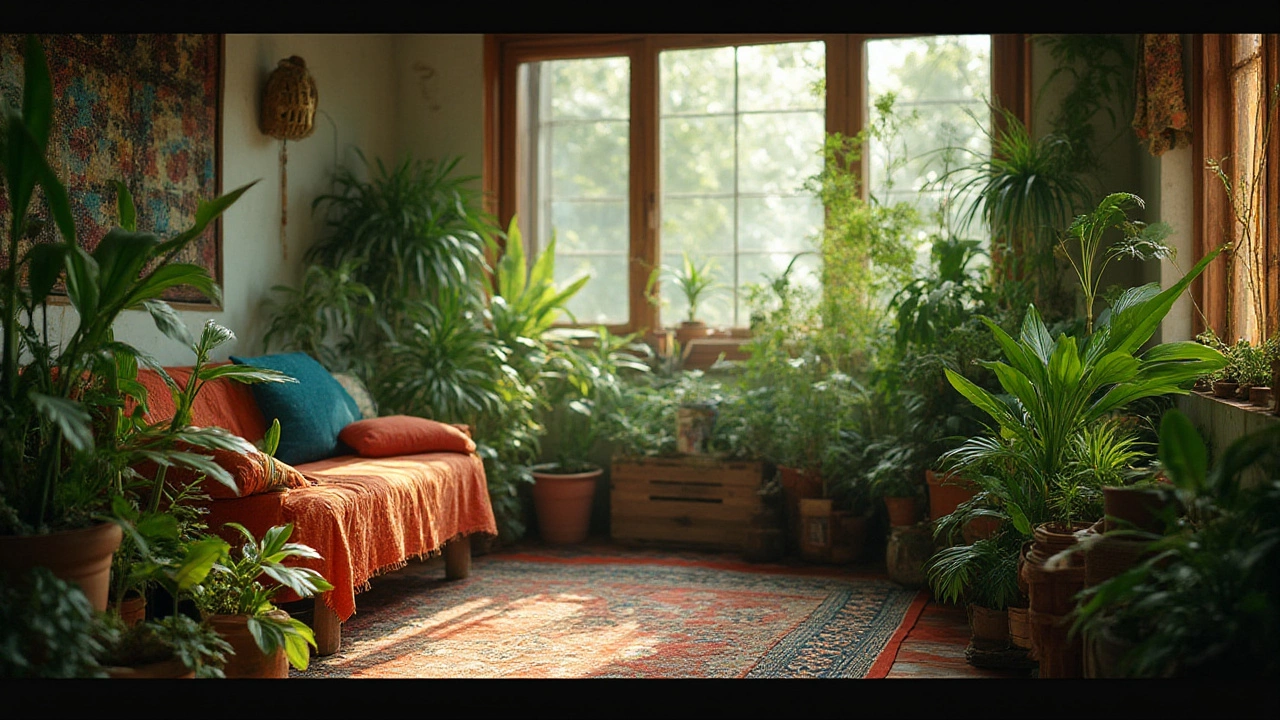Ever stopped to wonder why your gorgeous fiddle leaf fig suddenly looks sad or why those crispy brown patches keep showing up on your snake plant’s leaves? Misting your houseplants isn’t always the green-thumb trick it’s cracked up to be. Actually, plenty of plants downright dislike—or even hate—getting sprayed with water. If those humidity-loving Instagram plant hacks have left you with leaf spot disasters, you’re not alone. Some foliage reacts like you threw them a pool party they never wanted. Let’s cut through the noise and ask: which plants don’t like to be misted, and what’s a better way to help them thrive? For anyone chasing lush, healthy indoor plants, knowing what not to mist will keep you from making one of the most common, sneaky beginner mistakes.
Why Misting Isn’t for Every Plant
So, what made misting so popular in the first place? Since houseplants come from different corners of the globe, you’d guess spraying them with water mimics tropical rain. The reality’s more complicated. Misting only offers a quick burst of moisture—nothing like the constant humidity most jungle plants know outdoors. This difference matters because temporary wetness on leaves can backfire: it never really changes the humidity for longer than 10 or 15 minutes, but it does keep leaves damp enough to invite disease.
Let’s get a bit technical without boring you. Plant leaves are more than just green decorations—they breathe through microscopic pores called stomata. Some plants, especially those from arid regions or those with tough, waxy leaves, prefer their pores dry. Constantly making them wet can suffocate those pores, making leaves yellow, brown, or splotchy. Even more, a splash of water on the wrong type of leaf creates a microclimate for fungal and bacterial infections to move in. Ever spotted weird black, yellow, or tan marks forming after you misted? Those are likely leaf spot or powdery mildew—diseases that thrive in dampness.
Temperature also plays a sneaky role. In cool conditions, water can just sit on leaves forever, never evaporating, which is even worse. This is doubly true for rooms that lack air circulation—a stuffy bedroom, for example, makes misting a recipe for rot. Knowing your room’s environment is almost as crucial as understanding your plant’s origins. Some plants, especially those with hairy (think African violets) or velvety leaves, just hang onto water droplets, so dampness lingers long after you’ve walked away. These are the candidates most at risk when you grab your spray bottle out of habit.
Plants That Hate Being Misted
All houseplants are not created equal when it comes to mist tolerance. Some would really rather you keep the spray bottle far, far away. Let’s break down the repeat offenders—the ones you should never mist, no matter how dry your room feels.
- Succulents & Cacti: Aloe vera, echeveria, jade plant, zebra cactus, and their desert pals will rebel quickly if misted. Nearly all succulents have a waxy cuticle that naturally keeps water in. Constant surface dampness can cause rapid leaf rot, especially near their rosettes or joints. Instead, they handle dry air with style.
- Snake Plant (Sansevieria): Their upright, leathery leaves are basically rot magnets when exposed to repeated misting. They do fine in regular indoor humidity, and the only water they need is at the roots.
- Fiddle Leaf Fig (Ficus lyrata): The thin cuticle on those massive leaves means moisture tends to cling, encouraging fungal leaf spot. If you want droopy, puckered leaves, start misting this plant—otherwise, avoid it.
- African Violets (Saintpaulia): These popular flowering houseplants sport fuzzy leaves that trap water like little sponges. Misting them guarantees water will pool around the hairs—making perfect breeding ground for disease. Water at the base only.
- Pothos, ZZ Plant, Jade Plant: While pothos may seem hearty, excessive misting can trigger fungal outbreaks. The ultra-tough ZZ plant and jade react much like succulents—no regular misting, ever.
- Begonias: Some varieties, especially those with ‘angel wing’ or hairy leaves, don’t recover from repeated misting. Their leaves may spot and drop off, even if they look tropical.
If in doubt, check your plant’s native habitat. If it comes from arid deserts, misting is the last thing it wants. If it’s covered in fuzzy, waxy, or leathery leaves (think African violets or cactus), skip it. Plants marked as “low humidity tolerant” on the tag? Same story.
| Plant Name | Why No Misting? | Alternative Care |
|---|---|---|
| Succulents & Cacti | Leaf rot from water trapped in rosettes | Water soil when dry, good air circulation |
| Snake Plant | Prone to rot on leaf edges | Occasional wipe-down, water roots only |
| Fiddle Leaf Fig | Leaf spot and mildew from dripping leaves | Use pebble trays for humidity boost |
| African Violet | Fuzzy leaves trap water, disease risk | Bottom watering, avoid wetting leaves |
| ZZ Plant | Waxy leaves don’t need surface moisture | Wipe occasionally with damp cloth |
| Begonia (hairy-type) | Spots form with constant wetness | Water base, boost humidity with tray |

The Science Behind Leaf Damage from Misting
Let’s get into the nitty-gritty of what really happens when you mist the wrong plant. Leaf damage starts with microscopic structures on the plant’s surface—the cuticle, trichomes (tiny hairs), and stomata. The cuticle exists to keep water inside the plant, not to let it in. Spraying creates droplets that settle in leaf crevices, where air doesn’t circulate well. These droplets sit there, warm from room temperature and rich in nutrients from traces of dust, fertilizer, or even the minerals in tap water.
In these conditions, bacteria and fungi bloom. Black or brown rot patches happen as the water breaks down cell walls. In hairy plants, like African violets, mist turns every leaf into a spongey host for fungal spores. The hairs (trichomes) that keep bugs and sun off the leaf also trap water. Over a few hours, you might even see a shimmer or film on the leaves—basically, the first stage of mildew. For broad, waxy leaves (ZZ plant, snake plant), repeated droplets eventually erode the protective coating, leaving the plant vulnerable to pests as well as pathogens.
Worse yet, in places where heating or air conditioning dries the air, those droplets evaporate super fast, leaving behind salty or chalky residue from “hard” tap water. These leave unsightly spots that don’t wash off easily. On sensitive-leafed plants, droplet marks can burn like a mini magnifying glass if the sun or grow lights hit them—a random trick that’s more common than people think in modern city apartments.
Plants can also stress out from temperature shock. Misting with water cooler than room temperature causes pores to suddenly close, making leaves wilt. This sudden chill doesn’t just stress-out tropical plants—desert natives hate it even more. All these reasons prove why plants like succulents, cactus, and snake plants are far better off given water at their roots rather than a spritz on the foliage.
Better Humidity Hacks for Sensitive Plants
If misting is out, what’s a caring indoor gardener supposed to do when the air feels like the Sahara? The answer’s smart humidity tricks that mimic what plants naturally crave: steady, moderate moisture in the air, not a fleeting spray. Here are the best workarounds I’ve learned:
- Pebble Trays: Place a shallow tray of pebbles with water underneath your plant pot so the roots sit above the water level. As water evaporates, it gently boosts humidity right around your plant, without soaking the leaves.
- Group Your Plants: Creating a "mini jungle" by clustering plants clusters humidity right where they need it. When grouped together, plants actually help each other by exchanging water vapor.
- Room Humidifiers: If you’ve got a lot of tropical plants or dry winter air, investing in a room humidifier is often the best fix. It keeps humidity at a stable level, which works for all plant types, not just the fussy ones.
- Avoid Direct Sun and Dry Heat: Place sensitive plants away from heaters, vents, or windows where sun scorches moisture off their leaves.
- Regular Wipe-Downs: Give tough-leafed plants, like snake plant or ZZ plant, a gentle wipe with a damp (not dripping wet) microfiber cloth. It removes dust without soaking the surface.
- Use Distilled Water: If you absolutely must occasionally mist (for flowering orchids, say), skip the tap water—use distilled or rainwater. This avoids chalky residue and chemical buildup.
Remember, plants crave stability. Wild swings in moisture or temperature stress them out fast. Set your plants up in a cozy spot, keep airflow gentle, and let their roots—not their leaves—do the drinking.

You Don’t Need to Mist—Just Rethink Plant Care
If your spray bottle’s looking at you hopefully, put it down and save yourself a few headaches. The truth is, most common houseplants—especially the “trendy” ones—will thrive without the extra mist, as long as you keep their overall care routine dialed. It’s easy to get excited about misting as a quick fix, especially if you’ve seen tropical greenhouses packed with happy, dewy foliage. But your apartment is not a rainforest, even if your thermostat disagrees.
Instead of misting, focus on big-picture essentials: proper light, gentle airflow, root-level hydration, and stable, moderate humidity. Plants tell you what they need, often through their leaves. If you spot browning, splotches, or leaves dropping after misting, you’re not alone—and it’s a pretty clear signal to quit spraying. When in doubt, check tags, do a quick search for your plant’s “native habitat,” or compare notes with other keepers. If you want to pamper your collection, invest in a cheap hygrometer and see how your room stacks up. Most houseplants thrive between 40% and 60% humidity—much lower, and you’ll notice slow growth, much higher, and you risk disease.
So, save your mist for air plants, ferns, and a few rare orchids—leave the desert dwellers and waxy-leafed stars alone. If you skip misting and stick to the classics, you’ll spend less time treating disease and more time just enjoying your greenery. Isn’t that why we grow plants in the first place?

